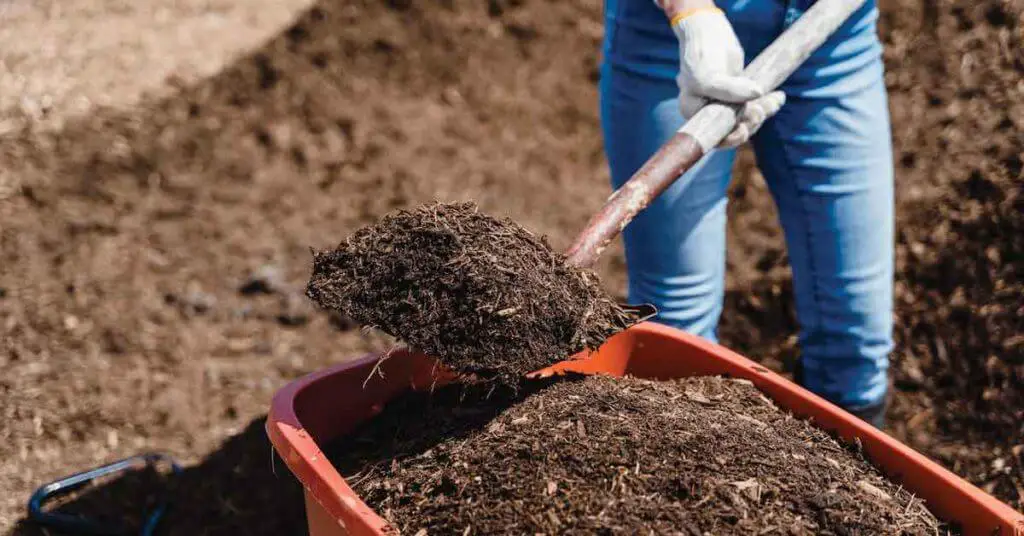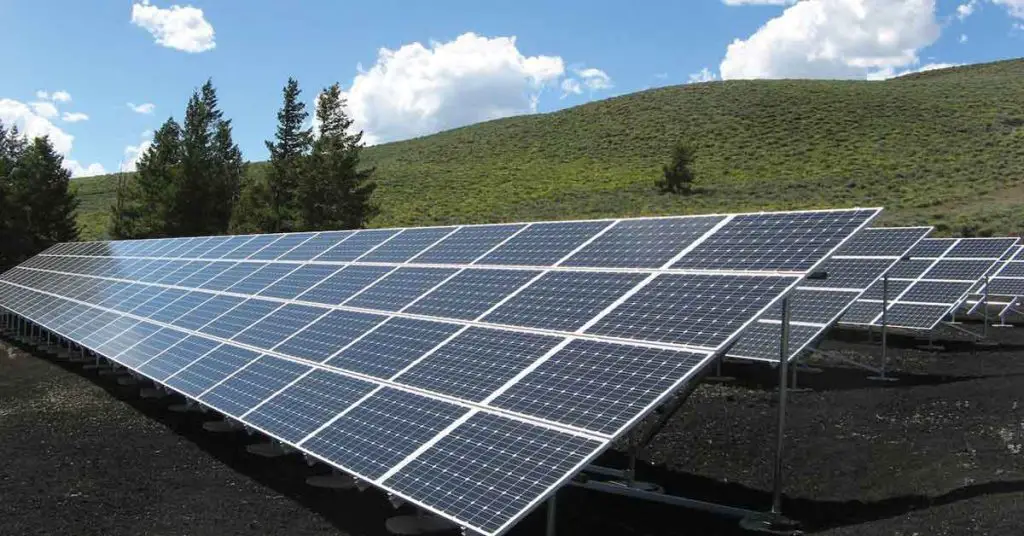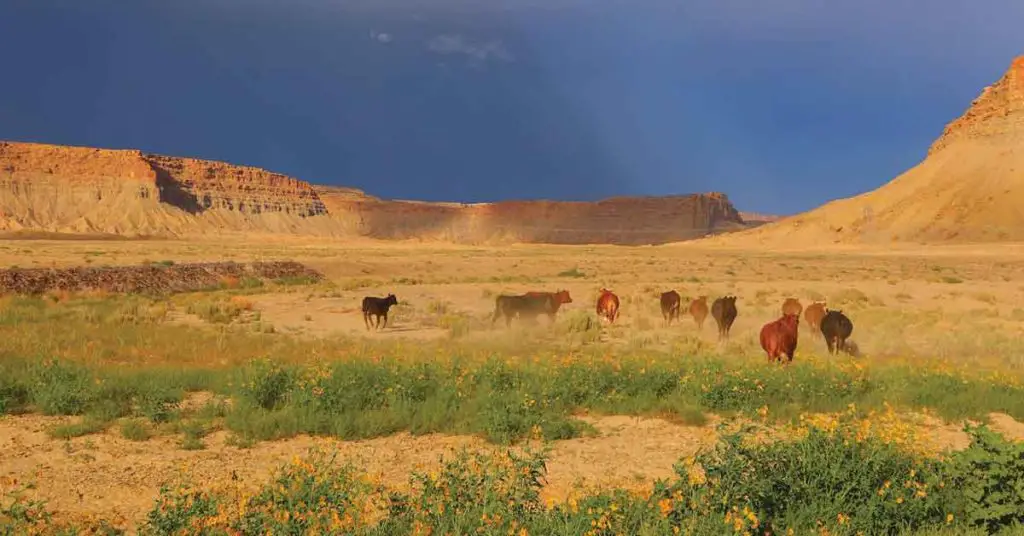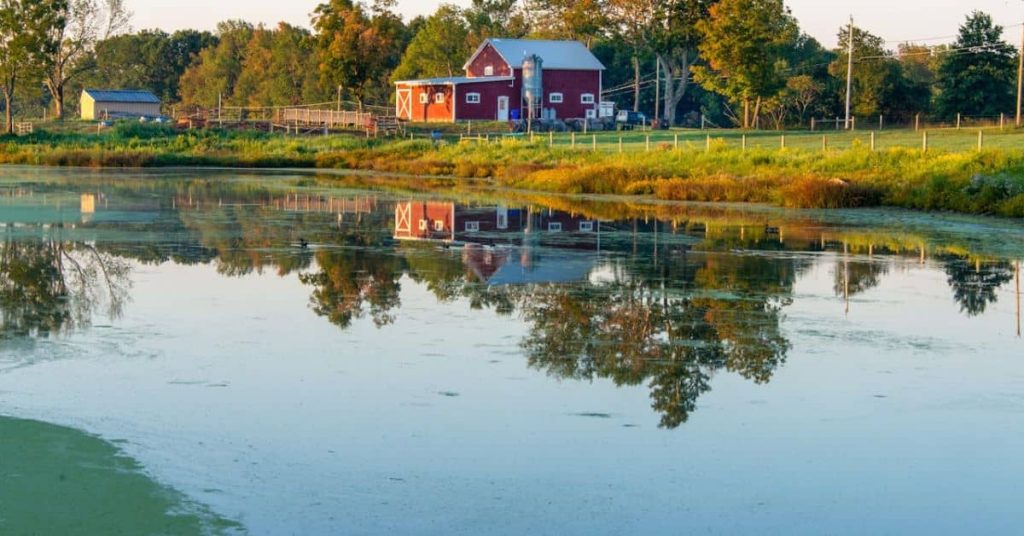The Foundations of Homesteading in California
Dive into the heart of sustainable living with “Homesteading in California: Embrace Sustainable Living in the Golden State.” This guide is your portal to understanding the vibrant tapestry of opportunities and challenges that California’s unique landscape presents.
From the sprawling coastlines to the sun-drenched valleys, California offers a diverse environment that is both inviting and demanding for homesteaders. Here, you’ll explore the foundational practices essential for building a sustainable homestead, tailored to thrive within the state’s distinct environmental and regulatory contours. Whether you’re drawn to the lush diversity of cool-season and warm-season crops or the intricate art of water management and irrigation, this guide illuminates the path to a fulfilling homestead life in the Golden State. Embark on this journey with us as we delve into the essentials of California homesteading, where the dream of self-sufficient living harmonizes with the rhythm of nature.
Cool-Season and Warm-Season Crops
California’s unique climate allows for a wide variety of cool-season and warm-season crops, ensuring a productive garden throughout the year. Understanding which crops to plant and when can maximize your yield and keep your garden thriving.
Cool-Season Crops
Cool-season crops flourish in California’s mild winters and are generally frost-tolerant. These include:
- Root Vegetables: Beets, carrots, parsnip, radish, and turnips thrive in cooler temperatures.
- Leafy Greens: Cabbage, celery, lettuce, spinach, and kale are ideal for cool-season planting.
- Brassicas: Broccoli, cauliflower, and Brussels sprouts are also well-suited to cooler weather.
These crops prefer average temperatures between 55°F to 75°F and can be planted in periods that align with these temperature ranges to ensure optimal growth.
Warm-Season Crops
As temperatures rise, it’s time to transition your garden to warm-season crops, which thrive in the heat:
- Fruit-Bearing Plants: Tomatoes, cantaloupe, watermelon, and winter squash are classic warm-season crops, needing long, hot days to mature.
- Leafy and Immature Fruit Crops: Corn, squash, and snap beans also fall into this category, requiring temperatures between 65°F and 95°F for optimal growth.
These crops are best planted when the risk of frost has passed and the soil has warmed, typically in late spring or early summer, depending on your specific location within California.
Planting Tips
- Start Indoors: For an extended growing season, consider starting plants indoors 6-8 weeks before the last frost date, then transplanting them outdoors when the weather is suitable.
- Soil Health: Refreshing your garden beds between seasons is crucial. Remove spent plants, add organic fertilizer, and avoid compacting the soil to maintain its ecology.
- Water Management: Adjust your irrigation practices according to the season. Cool-season crops may require less water, while warm-season crops may need more, especially during peak summer months.
By carefully selecting and timing your crops according to California’s growing seasons, you can enjoy a diverse and continuous harvest from your homestead garden. For more detailed planting guides and specific crop recommendations, refer to resources like the California Garden Web and California Farm & Garden
Mastering Water Management and Irrigation
Mastering water management and irrigation is crucial for sustainable homesteading in California, given the state’s varied climates and occasional water scarcity issues. Here are some practical tips and techniques to ensure your homestead garden thrives:
- Understanding the Climate: Recognizing the distinct climates within California is essential. The state hosts a range of USDA Growing Zones, affecting when and how you should water your crops. Coastal areas might have different watering needs compared to inland or desert regions due to variations in temperature and natural rainfall.
- Rainwater Harvesting: Collecting and storing rainwater can be an effective way to supplement your water supply. Using rain barrels or more complex systems to capture rainwater from your roof can provide an additional water source for irrigation during dry spells.
- Drip Irrigation: This method is highly efficient for water conservation, delivering water directly to the roots of your plants, minimizing evaporation and runoff. Drip systems can be particularly beneficial in warm-season crops that require consistent moisture.
- Soil Health and Mulching: Healthy soil retains water more effectively. Incorporating organic matter can improve soil structure and water retention. Mulching around your plants can also help conserve moisture by reducing surface evaporation.
- Appropriate Plant Selection: Choosing plants suited to your specific area’s water availability and climate can significantly reduce water usage. The Water Use Classification of Landscape Species (WUCOLS) database is a valuable resource for selecting plants based on their water needs.
- Efficient Watering Practices: Watering early in the morning or late in the evening can reduce water loss due to evaporation. Adjusting irrigation schedules according to the season and current weather conditions can also prevent overwatering.
- Local Resources and Guidelines: Various California cities and regions offer localized resources, including conservation practices, low-water plant recommendations, and rebate programs for water-efficient landscaping and irrigation equipment.
By implementing these strategies, you can create a more sustainable and water-efficient homestead in California. Embracing practices like rainwater harvesting, selecting appropriate crops, and utilizing efficient irrigation techniques can help you navigate the challenges of California’s diverse climate while conserving vital water resources. For more detailed information and resources, exploring local municipal and water utility publications can provide guidance tailored to your specific area in California (CCUH UC Davis).
The Soil and Animals of California Homesteading
Diving into the agricultural essence of California requires an understanding of its foundational elements – the soil that nurtures and the animals that sustain. The San Joaquin soil and the state’s diverse climatic conditions provide a rich tapestry for homesteading endeavors.

Understanding San Joaquin Soil
Central to California’s agricultural success, San Joaquin soil is a testament to the state’s fertile lands:
- Historical Recognition: San Joaquin soil holds the title of California’s official state soil, a designation stemming from its significant agricultural contribution.
- Soil Characteristics: Known for its reddish hue and a hardpan subsoil, San Joaquin soil presents unique challenges and opportunities for water and root penetration, essential for crop growth.
- Agricultural Productivity: This soil type supports a myriad of crops, playing a pivotal role in California’s status as a major food producer, often referred to as the nation’s “salad bowl.”
Raising Animals in California’s Diverse Climates
The varied climates across California offer a spectrum of possibilities for animal husbandry:
- Poultry: Chickens are a popular choice for their dual-purpose contribution of eggs and meat, along with their role in enhancing soil fertility.
- Small Livestock: Rabbits, known for their quick reproduction and nutritional meat, are suited for smaller homesteads, contributing valuable manure for garden fertilization.
- Larger Livestock: For those with more space, sheep and goats can provide a wealth of resources from dairy to wool, while also aiding in vegetation management.
In embarking on a homesteading journey in California, understanding the intrinsic qualities of the San Joaquin soil and adapting livestock choices to the environmental conditions are crucial steps. These elements form the cornerstone of a sustainable and flourishing homestead, weaving together the threads of agriculture and animal husbandry in harmony with California’s natural landscape.
For more information, explore resources on San Joaquin soil at the California State Capitol Museum and Wikipedia. Insights into sustainable gardening practices and soil profiles can be found at the UC Master Gardeners blog.
Navigating Regulations and Markets
Navigating the legal and commercial landscapes is essential for homesteaders in California. Understanding livestock regulations and engaging with local markets are key steps to ensuring a successful and compliant homesteading operation.
Complying with Livestock Permit Requirements
California has specific regulations governing the rearing and selling of livestock, which are crucial for homesteaders to understand:
- Livestock Identification: It’s important to be familiar with the requirements for livestock identification, as these can vary depending on the type of animals you are raising. The California Department of Food and Agriculture (CDFA) provides guidelines for this.
- Health and Safety Regulations: Ensuring your livestock meet health and safety standards is essential. This includes adhering to regulations related to the transportation and sale of animals, which aim to prevent the spread of diseases and ensure animal welfare.
- Environmental Regulations: Homesteaders must also be aware of environmental regulations, particularly those related to manure management and greenhouse gas emissions from livestock.
For a comprehensive understanding of these regulations, homesteaders can consult resources provided by the California Department of Food and Agriculture (CDFA) and the University of California Agriculture and Natural Resources (UCANR), which offer detailed information on livestock laws and best management practices in California.
Engaging with Certified Farmers’ Markets and Cottage Food Operations
Maximizing the potential of your homestead involves not only compliance with regulations but also active participation in local markets:
- Farmers’ Markets: Certified farmers’ markets in California offer a platform for homesteaders to sell their produce directly to consumers. Engaging with these markets can provide valuable exposure and a direct sales channel for your products.
- Cottage Food Operations: For those interested in producing and selling food products from home, California’s cottage food laws enable certain types of food to be made in home kitchens and sold to the public. Understanding these regulations can open up additional revenue streams for homesteaders.
Both farmers’ markets and cottage food operations require adherence to specific regulations and standards, which are designed to ensure food safety and quality for consumers. Homesteaders should familiarize themselves with these requirements to successfully participate in these markets.
By carefully navigating the regulatory environment and engaging with local markets, homesteaders in California can ensure their operations are both compliant and commercially viable. For more detailed information on regulations and market participation, resources from the CDFA and UCANR can provide valuable guidance.
Sustainable Practices for the California Homesteader
Embracing sustainability is crucial for homesteaders in California, where the unique climate and environmental concerns necessitate careful consideration of renewable resources and water conservation.

Implementing Renewable Energy Sources
California leads the nation toward a 100 percent clean energy future, with the Energy Commission playing a pivotal role in developing programs that use renewable energy and ensuring these efforts benefit all Californians. Popular renewable energy options for homesteaders include:
- Solar Energy: With California’s abundant sunshine, solar power is a highly viable option for homesteaders looking to reduce their carbon footprint and achieve energy self-sufficiency.
- Wind Energy: In areas with suitable wind conditions, small-scale wind turbines can supplement home energy needs, contributing to a diversified renewable energy setup.
Programs like the California Automated Permit Processing Program (CalAPP) assist local governments in establishing online solar permitting, making it easier for homesteaders to integrate solar energy into their practices. Additionally, the Renewable Energy for Agriculture Program encourages the installation of renewable energy technologies, supporting California’s agricultural operations with grants.
Water Conservation Strategies
Water conservation is a critical aspect of sustainable homesteading in California, especially considering the state’s periodic droughts. Some effective water conservation practices include:
- Rainwater Harvesting: Capturing and storing rainwater can provide an alternative water supply for irrigation and reduce dependence on traditional water sources.
- Drip Irrigation: This method delivers water directly to the roots of plants, minimizing evaporation and runoff, and is particularly effective for garden and crop irrigation.
Building and Home Energy Resource Hub provides resources and guidance to support actions like decarbonization, which includes energy efficiency and demand flexibility, further contributing to a sustainable homesteading approach. These measures not only reduce greenhouse gas emissions but also promote cost-effective decarbonization of buildings and support transportation electrification.
By integrating renewable energy sources and adopting water conservation practices, California homesteaders can create sustainable and resilient homesteads that contribute positively to environmental health and resource sustainability. For more detailed information and guidance on implementing these practices, the California Energy Commission offers a wealth of resources and support programs.
Building and Expanding Your California Homestead
Creating a thriving homestead in California involves strategic planning, from choosing the ideal location to constructing a sustainable living space. Here’s how to navigate these foundational steps:
Choosing the Right Acreage for Your Homestead
When selecting land for your homestead, consider California’s diverse climates, which range from arid deserts to wet, rain-fed regions. The location you choose will significantly impact your homesteading strategies, especially regarding water sourcing and crop cultivation. For a balanced approach, areas that receive moderate rainfall might be optimal, providing a good mix for both water storage needs and rainwater harvesting opportunities. The decision should align with your specific homesteading goals, whether that’s extensive farming, livestock raising, or a combination of both.
Designing a Sustainable Homestead
Designing your homestead with sustainability in mind is key to a successful, eco-friendly lifestyle in California. This includes:
- Energy Efficiency: Incorporating solar panels or small wind turbines can leverage California’s sunny climate to meet your energy needs sustainably.
- Water Management: Given the state’s water scarcity issues, implementing rainwater harvesting systems and efficient irrigation methods like drip irrigation can conserve this precious resource.
- Building Materials: Using sustainable or locally sourced materials for your home not only reduces your carbon footprint but also helps in blending your homestead with the natural surroundings.
When setting up your homestead, consider the types of animals that are suitable for California’s climate. Smaller animals like chickens and goats may be more manageable and require less water, making them suitable for areas with limited water resources. It’s also crucial to provide adequate shade for livestock due to California’s sunny conditions.
For those interested in off-grid living or establishing a homestead in California, areas like Ventura County, Siskiyou County, and Mendocino County offer fertile land, favorable laws, and a community supportive of sustainable living practices. These regions provide a blend of agricultural potential and renewable energy opportunities, making them ideal for homesteaders seeking a self-sufficient lifestyle.
Embarking on a homesteading journey in California involves careful consideration of both the natural environment and the regulatory landscape. By selecting the right location, focusing on sustainable building practices, and choosing livestock and crops that align with California’s diverse climate, you can build a homestead that is both productive and environmentally responsible.
Cultivating Your Homestead Garden
Creating a flourishing garden in the unique climate of Southern California requires tailored strategies to ensure a bountiful harvest throughout the year.

Gardening in Southern California’s Unique Conditions
Southern California’s gardening landscape is influenced by its moderate climate, allowing for a wide range of plant growth. Here are some key considerations:
- Sunlight: Gardens require at least six hours of direct sunlight daily. Selecting a planting site with ample sunlight is crucial for vegetable growth.
- Soil Preparation: Enhancing soil quality with compost or organic mulch can build the best foundation for your plants, promoting healthy growth.
- Irrigation Techniques: Drip irrigation and mulching around plants can significantly reduce the need for frequent watering, a crucial strategy in Southern California’s arid conditions.
- Weed Management: Minimal soil disturbance and mulching can effectively control weed growth, reducing garden maintenance efforts.
The planting calendar in Southern California spans across the year, with February being an ideal month to start planting salad greens, carrots, and other root vegetables directly in the ground. March and April are prime months for planting a variety of beans, lettuce, and tomatoes, among others. As the season progresses into May and beyond, it’s important to adjust your planting strategy to accommodate the warmer weather, focusing on heat-tolerant crops like corn, eggplant, and various melons.
Innovative Food Preservation Techniques
Preserving the bounty of your garden is essential, especially in California, where the growing seasons can provide an abundance of produce. Consider these methods:
- Canning: A great way to preserve fruits, vegetables, and even meats, canning can keep your pantry stocked with garden produce throughout the year.
- Drying: Herbs, fruits, and some vegetables can be dried and stored for use in cooking and teas.
- Freezing: Many fruits and vegetables freeze well and retain much of their nutritional value, making this an easy preservation method.
By adapting your gardening practices to Southern California’s climate and utilizing effective food preservation techniques, you can enjoy the fruits of your labor all year round. Remember, successful gardening in this region is about understanding the local climate nuances, preparing your soil with care, and choosing the right crops for each season. For more detailed planting guides and tips, local gardening centers and community gardens can be valuable resources
Embracing Community and Overcoming Challenges in Homesteading
Homesteading in California is a journey that intertwines with the spirit of community and the readiness to tackle unique challenges. From connecting with like-minded individuals to navigating the state’s distinct environmental hurdles, each step is a stride towards sustainable living.

Joining Homesteading Communities
California’s diverse landscapes and climates offer a rich tapestry for homesteaders, creating a vibrant community eager to share knowledge, resources, and support. Joining a homesteading community can be a gateway to learning new skills, exchanging ideas, and finding camaraderie on your homesteading journey. These communities often organize workshops, events, and meetups focusing on sustainable practices, permaculture, and self-sufficiency, providing a foundation for growth and learning.
Addressing Homesteading Challenges in California
Homesteading in California comes with its set of unique challenges, shaped by the state’s environmental and regulatory landscape:
- Water Scarcity: A prevalent issue in California, water scarcity demands innovative solutions from homesteaders. Techniques such as rainwater harvesting, efficient irrigation systems, and drought-resistant planting can mitigate these concerns, ensuring your homestead remains resilient even in dry conditions.
- Wildfires: With the increasing frequency of wildfires, homesteaders must adopt fire-safe practices, including creating defensible spaces, choosing fire-resistant materials for buildings, and staying informed about local fire regulations and safety measures.
- Zoning and Regulations: Navigating California’s zoning laws and agricultural regulations is crucial for setting up and expanding your homestead. Understanding local laws regarding land use, building codes, and livestock can help you ensure compliance and avoid potential legal issues.
By embracing the supportive networks within California’s homesteading community and preparing for the state’s environmental challenges, homesteaders can cultivate a thriving and sustainable lifestyle. Engaging with local resources, staying informed about best practices, and building strong community ties can empower you to overcome obstacles and enjoy the rewards of homesteading in the Golden State.
For more insights into sustainable gardening practices and selecting the right plants for your region, consider exploring resources like the California Homesteading Collective and websites dedicated to homesteading in California, such as 5 Acre Homestead and Earthineer. These platforms provide valuable guidance and community support for both novice and experienced homesteaders.
Recap: Homesteading in California
Embarking on a homesteading journey in California presents a fascinating mix of rich opportunities and distinct challenges that require resilience, innovation, and community engagement. From the fertile soils and diverse climates favorable for a wide range of crops and livestock to the complexities of water management and regulatory compliance, homesteading in the Golden State is as rewarding as it is demanding.
By integrating sustainable practices such as renewable energy sources, water conservation, and eco-friendly building and farming techniques, homesteaders can significantly enhance their self-sufficiency and reduce their environmental footprint. The importance of community cannot be overstated; connecting with fellow homesteaders offers invaluable support, shared knowledge, and a sense of belonging that enriches the homesteading experience.
However, the path is not without its hurdles. Navigating California’s zoning laws, preparing for natural challenges like water scarcity and wildfires, and making informed choices about land and livestock are all critical considerations that require thorough research and planning.
As you delve deeper into the homesteading lifestyle, remember that each step towards self-reliance also moves you closer to a sustainable future. Whether you’re a seasoned homesteader or new to the scene, California’s unique landscape and supportive community provide a fertile ground for growth and innovation.
For more insights and detailed guidance on homesteading in California, resources like the California Homesteading Collective and Earthineer can offer comprehensive support and information tailored to the diverse needs of California homesteaders. Embrace the journey, learn from the community, and contribute to the vibrant tapestry of sustainable living in California.
Disclaimer: The information provided in this article is for general informational purposes only and is not intended to be a substitute for professional advice. The author of this article does not claim to be an expert in homesteading and the information provided should not be relied upon to make decisions about your own homesteading journey. Please do your own research and consult with a qualified professional before making any decisions about your homestead.
Share via:
Shaun Alexander is the main writer and editor for HomesteadingSimple.com. With a strong passion for homesteading and sustainability, Shaun has dedicated his life to learning and sharing information about a simple, fulfilling existence tied to the land. His expertise ranges from gardening and livestock management to off-grid living and DIY projects, reflecting the diverse skills necessary for a successful homesteading lifestyle. Shaun’s goal is to inspire and educate others about the possibilities of homesteading, whether in rural, suburban, or urban settings, and to provide practical advice and tips for both beginners and seasoned homesteaders. He believes in a future where more people return to their roots, embracing a life of self-sufficiency and harmony with nature.





